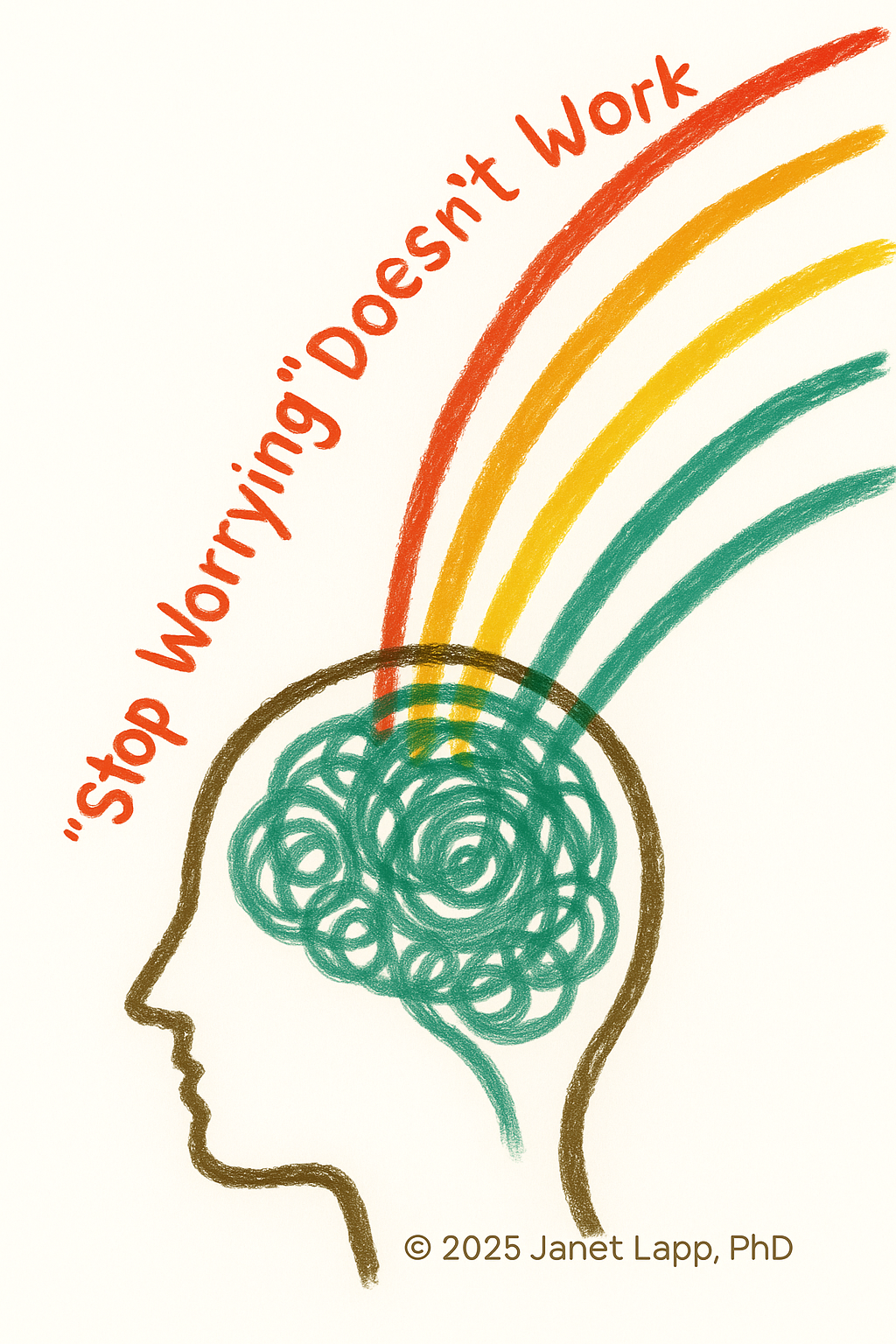A Kinder Approach to Managing Your Mind
By Dr. Janet Lapp
Have you ever tried to talk yourself out of worry? “Just stop thinking about it,” you tell yourself. Yet minutes later, the worry is louder than ever.
There’s a reason for that — and it’s not because you’re weak. It’s because your brain has built-in processes that resist this kind of command.
Why "Stop Worrying" Fails
Psychological Reactance:
The moment you tell yourself not to think about something, your mind rebels. It’s a survival instinct: your attention is drawn even more to the "forbidden" thought.Zeigarnik Effect:
Our minds cling to unfinished tasks. Worry, if not fully acknowledged, becomes one of those tasks—popping up over and over.Self-Confidence Erosion:
When attempts to banish worry fail, you may start believing there’s something wrong with you. There isn’t. Your brain is operating as designed.
Why It Matters: The Health Toll of Worry
Worry doesn’t just sap happiness — it can make us sick. Harvard fMRI studies show that imagining a stressful event triggers the same brain activity and hormone release as actually experiencing it. Chronic worry activates a stress cascade that harms the body:
Higher blood pressure
Suppressed immunity
Memory and learning impairments
Increased belly fat
Accelerated aging (via telomere shortening)
Beyond physical health, chronic worry robs us of time and energy. Some studies estimate we spend up to 50% of our time worrying—with no benefit.
A Gentle, Effective Practice
If your worry feels rooted in deeper anxiety or trauma, consider working with a trauma-informed psychologist. But for day-to-day worries, here’s a simple method you can try:
The Worry Pad Method
1️⃣ When you notice a worry, pause. Congratulate yourself for noticing it. Don’t fight it—write it in Column One of your Worry Pad.
2️⃣ Schedule a 15-minute “Worry Appointment” later that day.
3️⃣ During your appointment, look at each worry mindfully. Then ask:
Can I fix this? (Column Two “Can Control”)
Is this out of my control? (Column Three: “Cannot Control”)
If you can take action, note it and plan it. If not, practice releasing.
Remind yourself of this wisdom: "Grant me the serenity to accept the things I cannot change, the courage to change the things I can, and the wisdom to know the difference.”
Why This Works
Simply naming and categorizing your worries reduces their grip. Complete concentration by the ‘thinking’ part of your brain moves you to solutions or to let go of what you can’t control—freeing your mind and energy for what matters most.
You’ve got meaningful work to do.
Don’t let worry steal that from you.

